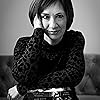Questions About At the Stroke of Nine O'Clock
Reader Q&A
To ask other readers questions about
At the Stroke of Nine O'Clock,
please sign up.
Answered Questions (13)
Unanswered Questions (5)
About Goodreads Q&A
Ask and answer questions about books!
You can pose questions to the Goodreads community with Reader Q&A, or ask your favorite author a question with Ask the Author.
See Featured Authors Answering Questions
Learn more


